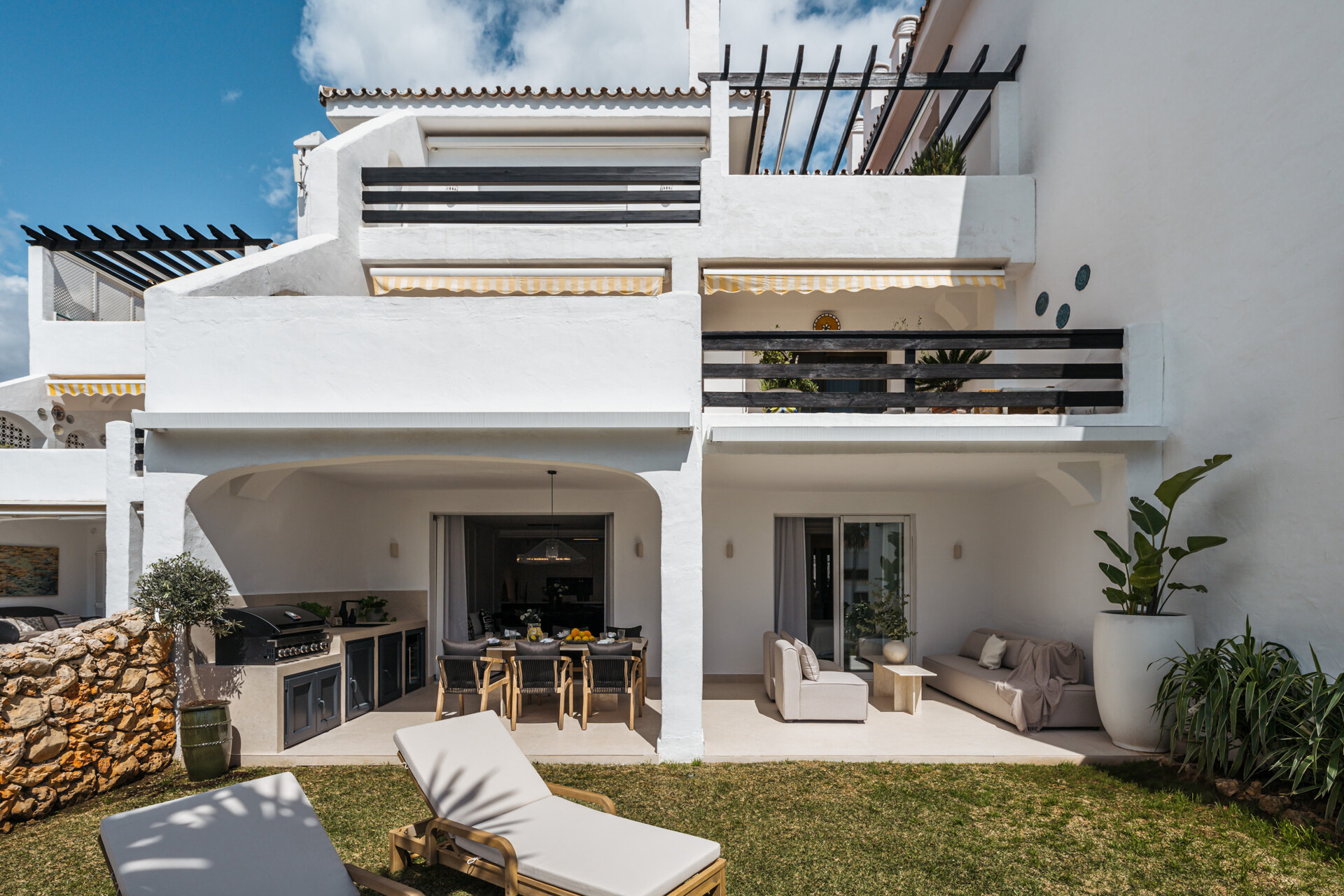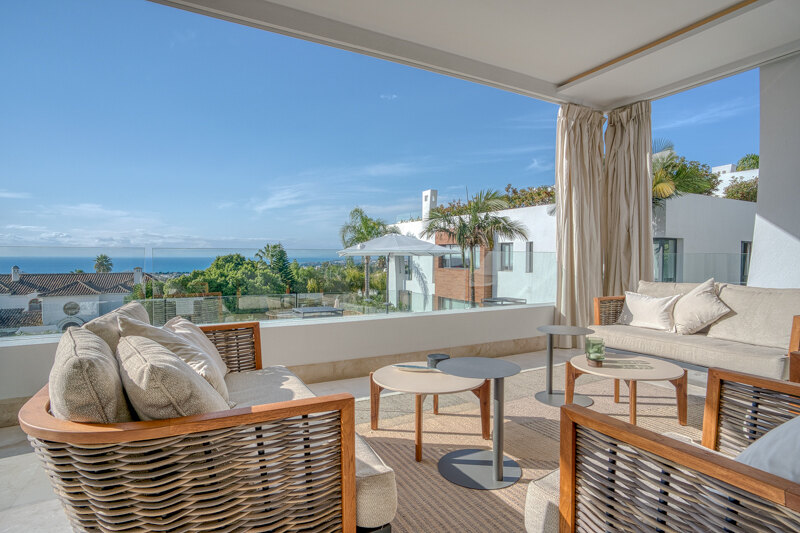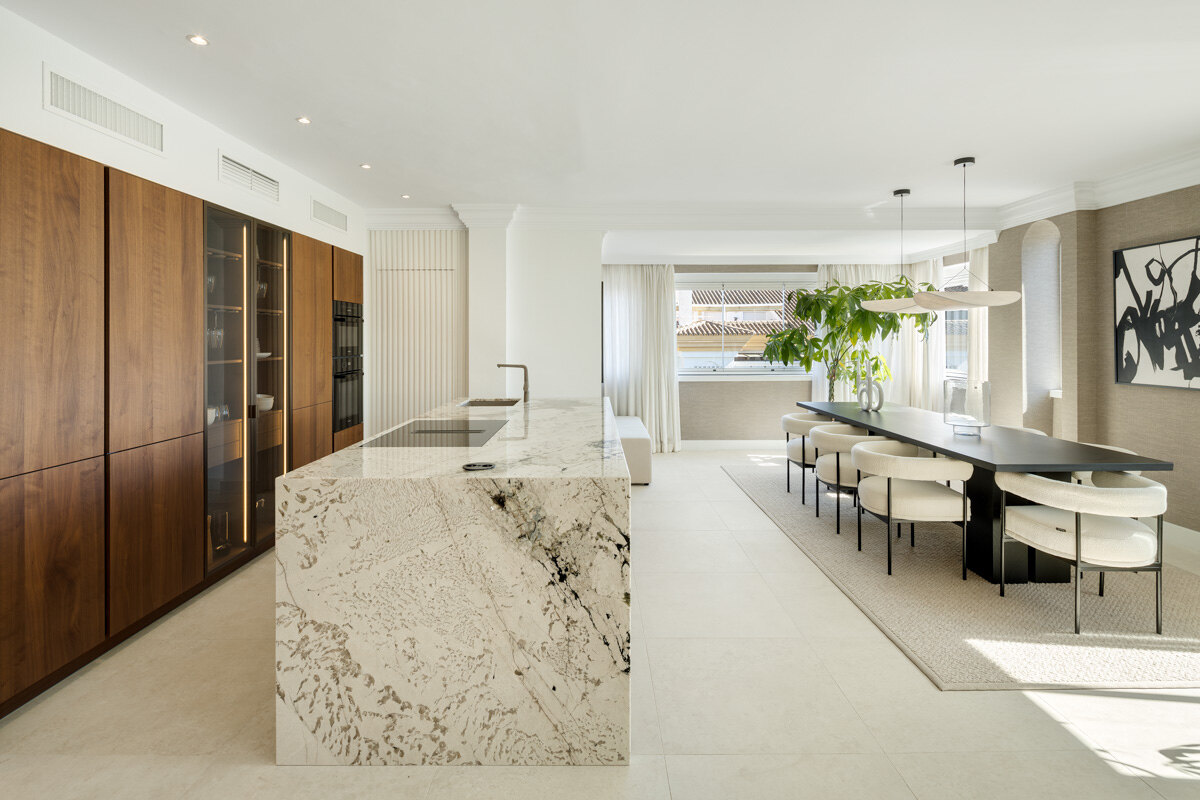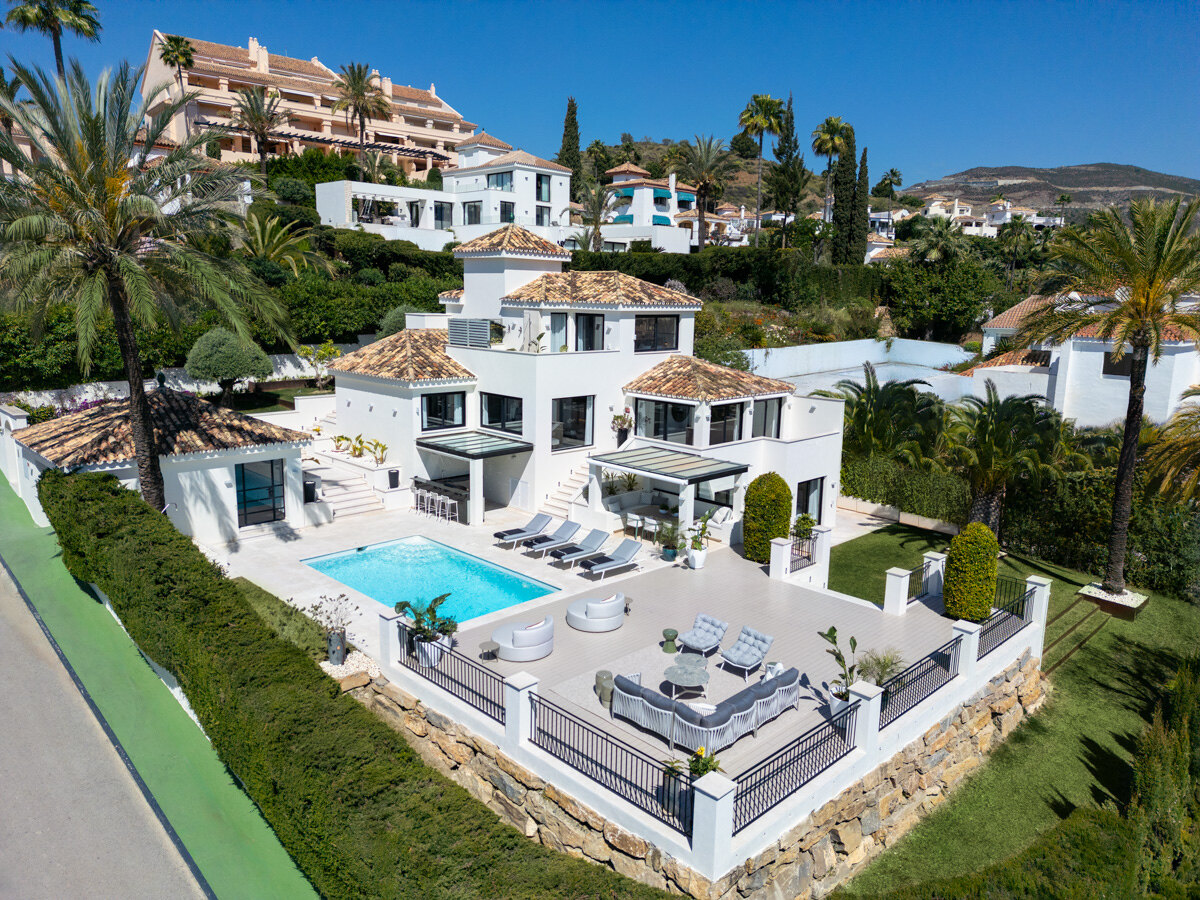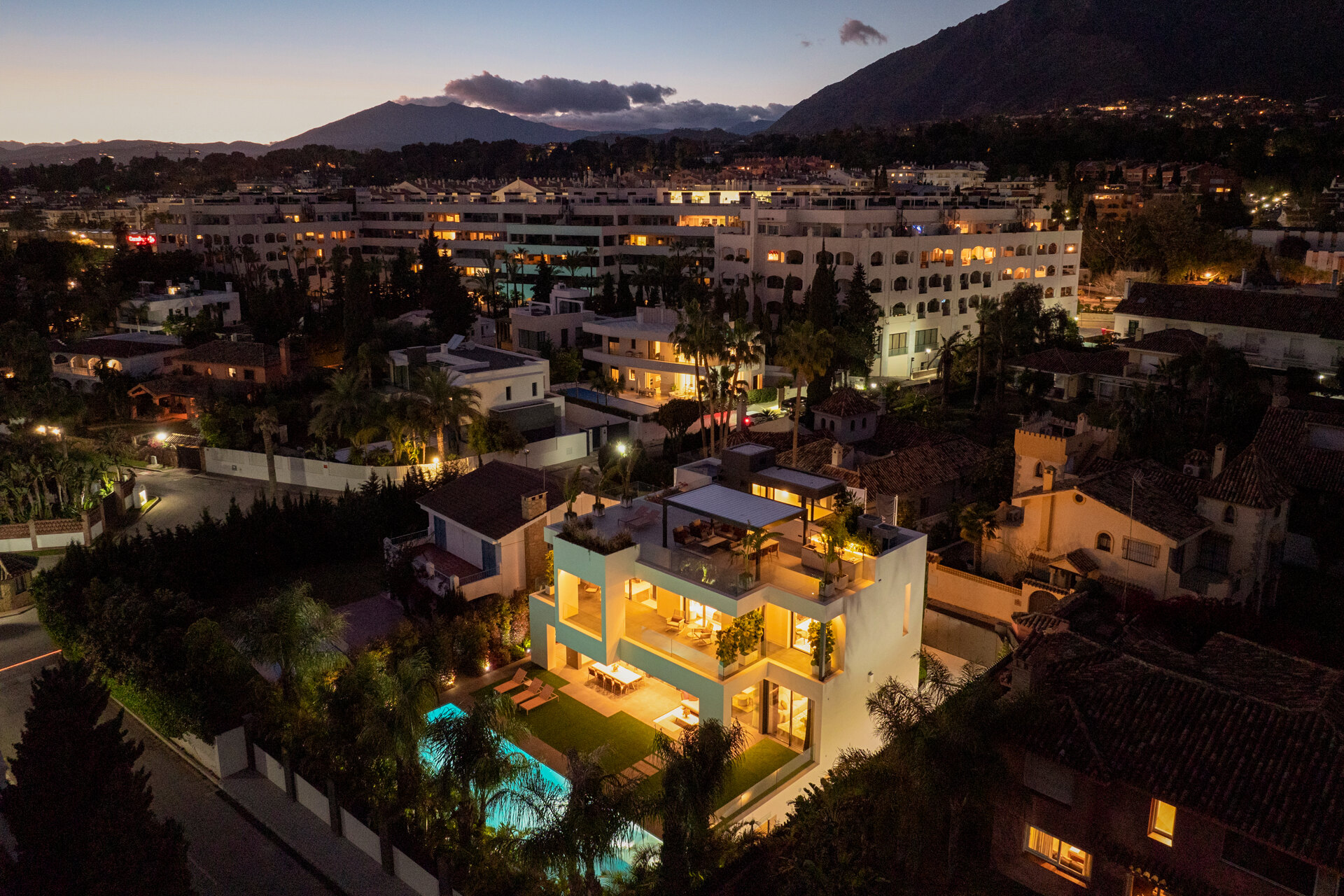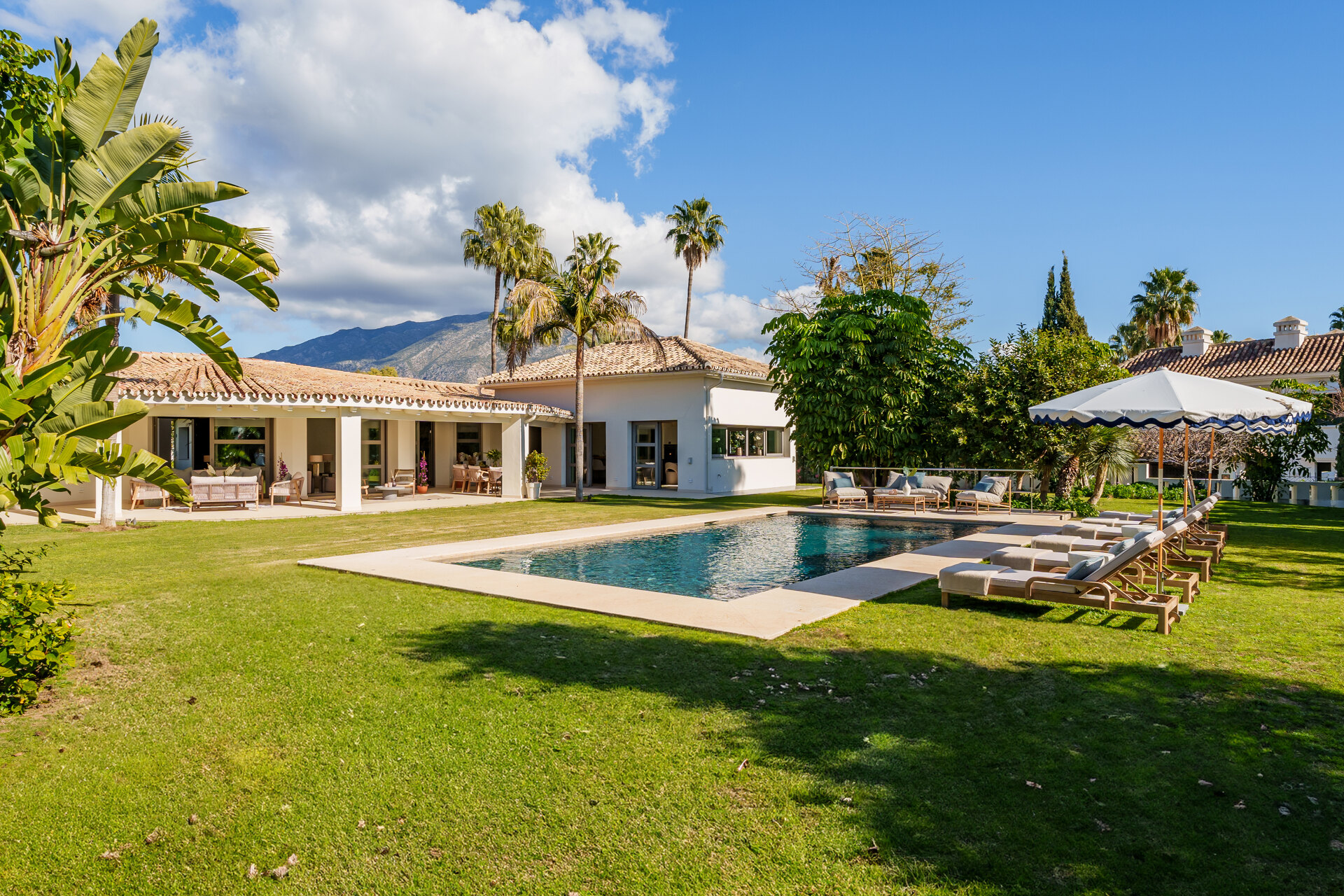
Marbella.
Beachside bliss, historic streets, and gourmet experiences
Marbella’s downtown blends urban vibrancy with seaside charm, just steps from the Mediterranean. Enjoy sun-soaked beaches, scenic promenades, historic Old Town, art galleries, lush parks, and vibrant culinary scenes. Seamlessly connected to the Costa del Sol’s hotspots.
What makes Marbella one-of-a-kind?
Marbella’s downtown is a captivating blend of urban vibrancy and quaint village charm, a short stroll away from the Mediterranean Sea. This unique fusion of experiences makes it an ideal destination for those seeking the best of both worlds: the convenience and amenities of a city centre coupled with the laid-back appeal of a seaside haven.
Days in the downtown area seamlessly flow from sun-drenched mornings on the beach, strolls along the picturesque promenade, and immersive journeys through the labyrinthine streets of the historic Old Town. Art enthusiasts will revel in the abundance of art galleries, while nature lovers can find solace under the shade of trees in verdant parks. Thrill-seekers can get their fix with water sports along the promenade. And of course, no exploration of Marbella’s downtown would be complete without spoiling on a culinary adventure, with a range of gourmet experiences that cater to all tastes.
Marbella’s downtown is not just a fascinating destination; it’s also a gateway to the countless hot spots in the Costa del Sol. Its excellent connectivity ensures that major points of interest are within easy reach, allowing visitors to immerse themselves in the region’s rich cultural heritage, explore charming neighbouring towns, and revel in the beauty of the surrounding landscapes.
Unveiling the rich history of Marbella
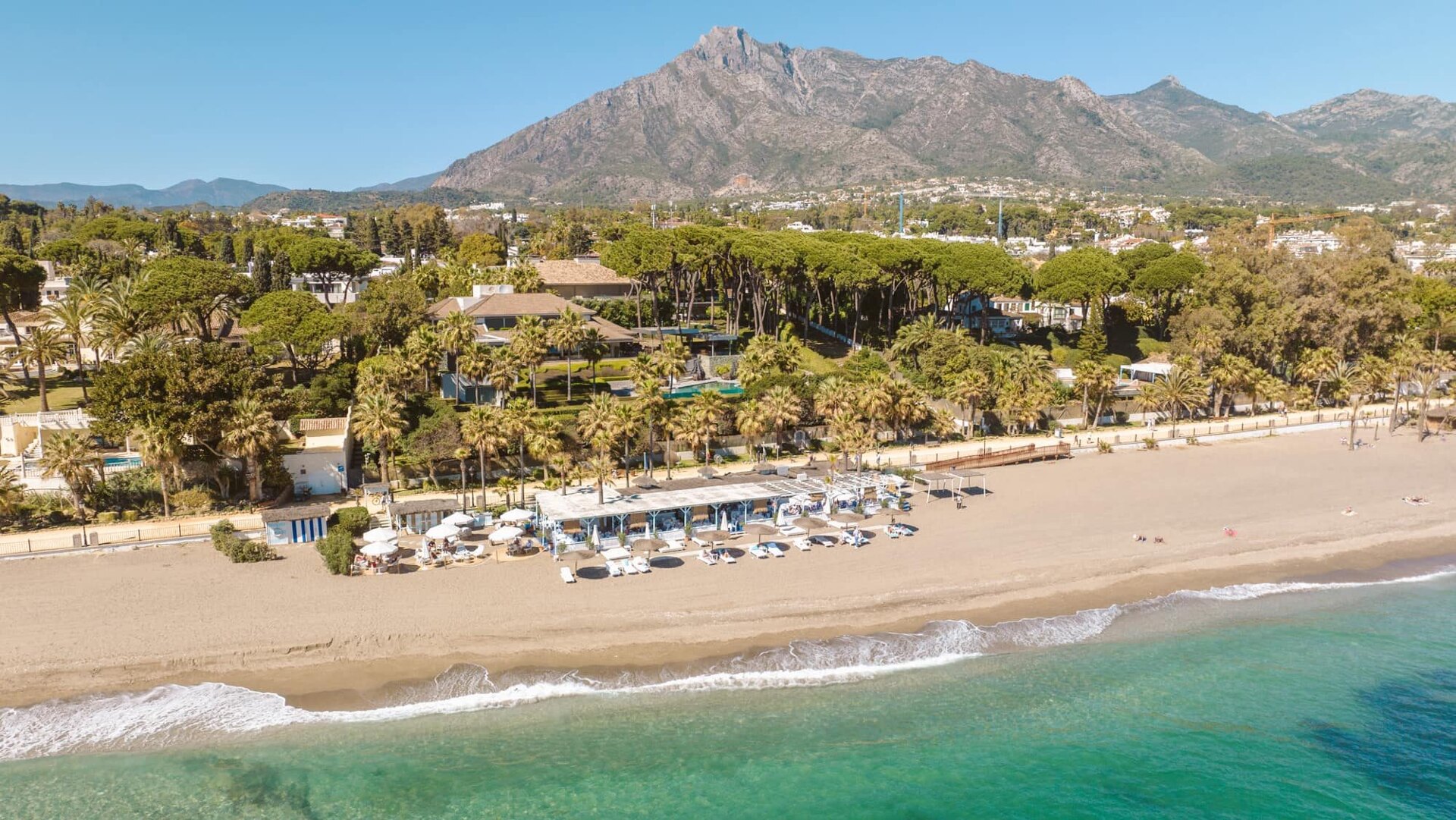
Lodged on the shores of the Costa del Sol, Marbella boasts a rich and captivating history that stretches back to the 8th century BC. It was during this era that the Phoenicians set foot on these shores and established the settlement of Marbilís. Life in this early Phoenician enclave revolved around the sea, with fishing and the extraction of minerals.
As the centuries unfolded, Marbella’s destiny intertwined with other powerful civilizations. The Romans left their indelible mark on the landscape, as evidenced by the enduring ruins of the Las Bóvedas Roman Baths, the Roman bridge at Puente Romano Beach Resort and the Río Verde Roman Villa. Following the fall of the Roman Empire, the Visigoths emerged, leaving behind the Vega del Mar Paleochristian Basilica, one of Spain’s most significant Visigothic monuments.
In the 8th century AD, Marbella’s history took another dramatic turn with the arrival of the Moors. The city, then known as Marbal-la, underwent a remarkable transformation, adorned with a majestic castle to safeguard its inhabitants. Agriculture, craftsmanship, and trade flourished, propelling Marbella into an era of prosperity. This golden age continued until 1487 when the Catholic Monarchs reconquered the city.
Under the new Christian rule, Marbella’s urban landscape underwent a significant metamorphosis. The heart of the Muslim Medina morphed into the charming Old Town that we admire today, while the Plaza de los Naranjos, a vibrant square adorned with orange trees, emerged as a popular gathering spot. The city’s industrial prowess soared as Spain’s first iron furnaces were established, harnessing the rich iron deposits of the Sierra Blanca mountains. This industrial boom propelled Málaga to become the second-most industrialized province in the Iberian Peninsula.
Marbella’s evolution continued unabated, and by the early 20th century, its identity had undergone a profound transformation. The city transformed into an elite tourist destination. In 1954, Prince Alfonso’s visionary spirit materialized with the establishment of the Marbella Club Hotel, an oasis of sophistication that redefined the standards of hospitality. Inspired by its success, Prince Alfonso extended his vision to the surrounding area, envisioning it as a haven for elegant residences and complementary businesses. This grand idea materialized with the creation of the Puente Romano Beach Resort. His entrepreneurial endeavours cemented Marbella’s status as a world-renowned exclusive destination, a reputation it proudly upholds to this day.
Where is Marbella located?
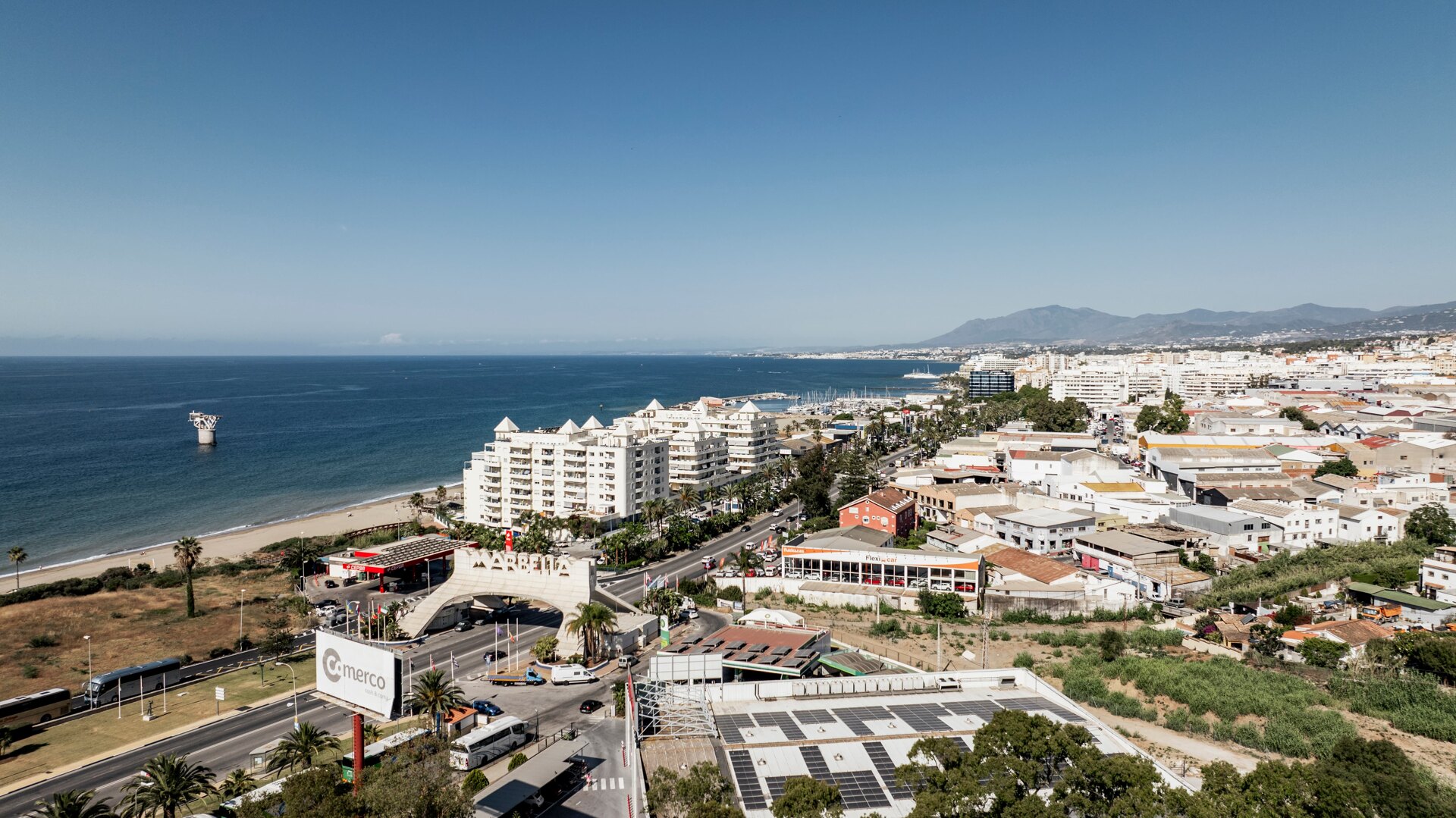
The city’s heart, downtown Marbella, is a blend of history and modernity, seamlessly transitioning from the iconic Arco de Marbella to the “Pirulí”. This interesting sculpture, inspired by a traditional Spanish candy and designed by the renowned MAD Architects, is a testament to the city’s embrace of creativity. Its copper-clad exterior gleams under the Mediterranean sun, making it a landmark that welcomes visitors to the city’s vibrant core. Marbella’s allure unfolds beyond its urban centre, encompassing the scenic coastline that extends from Playa del Cable to the Playa de la Fontanilla.
Marbella’s strategic location makes it an ideal base for exploring the surroundings. Below, we outline the approximate distances in kilometres and minutes, but it’s crucial to check traffic conditions before heading out to decide which route to take:
The Golden Mile. 2.1 km – 5 minutes. Directions
Nueva Andalucía. 7.2 km – 13 minutes. Directions
Puerto Banús. 8.4 km – 15 minutes. Directions
Estepona. 33.6 km – 29 minutes. Directions
Málaga International Airport. 49.6 km – 37 minutes. Directions
Gibraltar International Airport. 77.5 km – +1 hour. Directions
Note that the Costa del Sol is connected by two main highways: the A7 and the AP7. The AP7 is a toll road that offers faster travel, especially during the busy summer months.
What is the size of Marbella’s area?
Marbella covers an expansive 117 square kilometres (45 sq mi) and stretches 44 kilometres (27 mi) along the coast. While its land area is similar to medium-sized cities, Marbella’s coastal location and proximity to Málaga give it a vibrant, large-city feel, drawing significant tourism and economic activity.
What types of homes are available in Marbella?
The centre of Marbella offers a diverse array of real estate options to suit every taste and need. Unlike other areas, the downtown area is home to a concentration of apartment buildings, with those located on the beachfront being in particularly high demand. The most exclusive apartments are found in the area of Marbella closest to Puerto Banús.
While the buildings in the downtown area are generally old, many are undergoing renovations, transforming them into prime investment opportunities. These renovated apartments offer the allure of living surrounded by the city’s conveniences, just a few blocks from the beach.
Is Marbella a safe area?
Marbella prioritizes the safety and security of its residents and visitors, implementing various measures to ensure a peaceful and secure environment. The city benefits from a high concentration of police stations, ensuring prompt and effective assistance in case of emergencies.
What are the main attractions in Marbella?
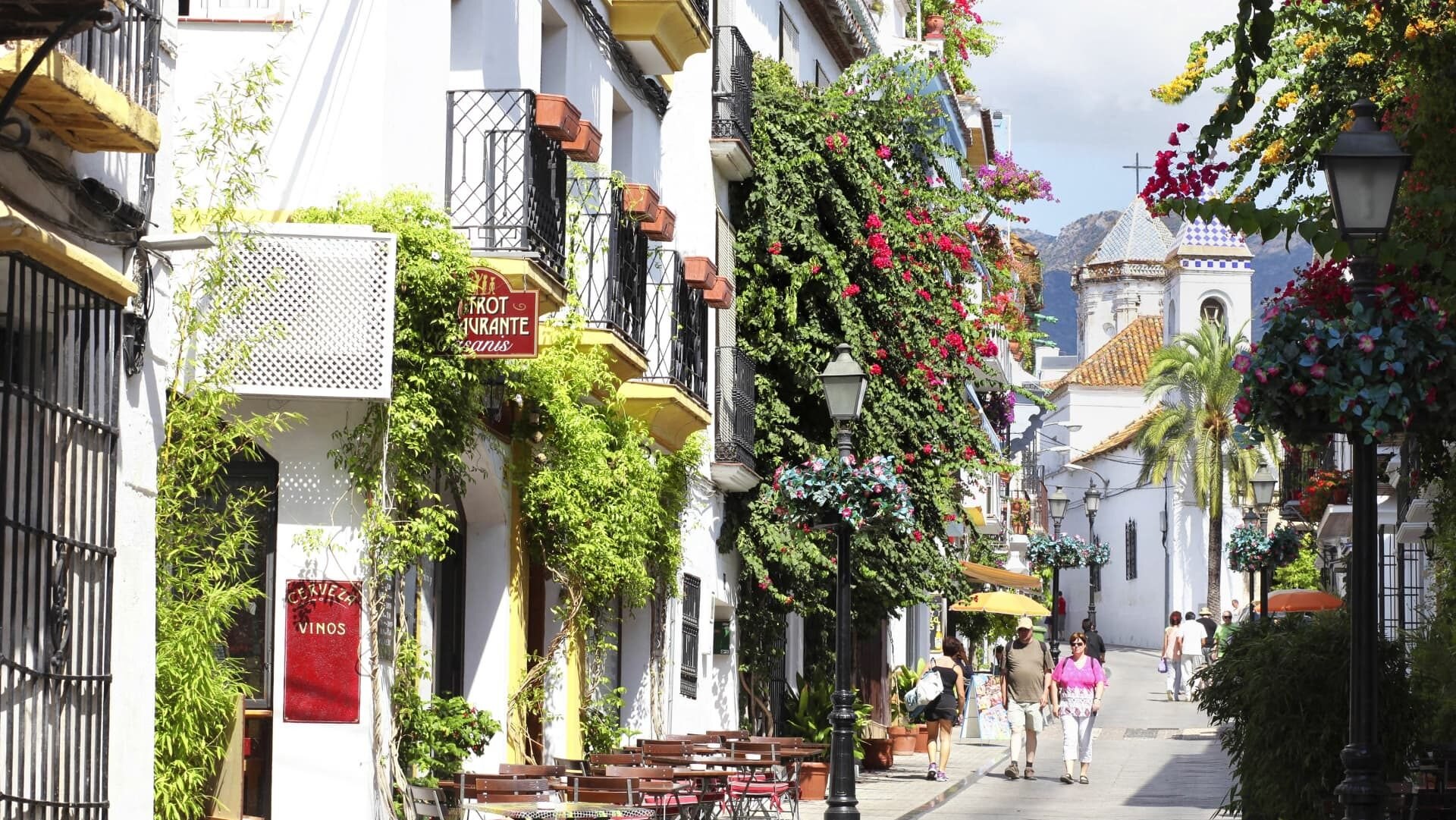
Marbella’s city centre is a lively and comprehensive area, offering a wide range of attractions. Surrounding areas like The Golden Mile, Puente Romano, Sierra Blanca, and Río Real also offer diverse options. However, there are some must-visit stops that define downtown’s identity and are worth exploring.
The Old Town. The Old Town of Marbella is a charming labyrinth of narrow streets, vibrant flower-filled squares, and picturesque whitewashed houses. This historic district is rich with attractions, including one of the most stately streets of the 19th century: Calle Ancha. This thoroughfare once served as a vital connection between the city centre and the northern area, where farmhouses (“alquerías” in Arabic) were located, supporting agricultural and livestock activities. A must-visit spot is the balcony of Casa Correa, located at number 18 Calle Ancha, offering the perfect vantage point for capturing a memorable photo. When venturing further into the Old Town, a stop at the Plaza de los Naranjos is mandatory. This vibrant square boasts charming bars, a captivating Renaissance fountain, and access to the Ermita de Santiago, the city’s oldest religious temple. From there, continue the journey to Nuestra Señora de la Encarnación, a 16th-century Baroque church housing the Sol Mayor Organ, a masterpiece designed to resonate classical music in sacred spaces and considered one of Spain’s finest. Then, take a stroll along the ancient fortress walls, the murallas de la antigua Alcazaba, built between the 11th and 12th centuries during the reign of Abderraman III. Get directions.
Marcado Municipal de Marbella. Every day (except Sundays) from 8 am to 3 pm, the market opens to those who want to explore the bustling ambience. From butchers and fishmongers to greengrocers and regional product stalls, it is a haven for culinary enthusiasts seeking fresh, high-quality ingredients. Engage with passionate vendors, eager to share their knowledge and expertise, ensuring the selection of the finest ingredients for culinary creations. Experience the vibrant atmosphere while mingling with locals and fellow market-goers. Take a moment to pause and savour a delicious bite, perhaps accompanied by a glass of local wine, creating an unforgettable gourmet experience. Get directions.
The Avenida del Mar (Avenue of the Sea). This open-air art gallery is home to 10 bronze sculptures made from the original moulds of various pieces created by Dalí, framed by stunning views of the Mediterranean. The sculptures are located along the avenue that stretches between Alameda Park and the sea. Get directions.
Alameda Park. This spot is a perfect place for a stroll in the shade of ficus, pine, and araucaria palm trees, as well as the shade-providing plane trees, planted between the 1910s and 1920s. In addition to being a leisure space with a children’s playground, it often hosts cultural events. Get directions.
Marbella Marina. Visiting it is an unforgettable experience, with the beautiful sight of sailboats juxtaposed against the city skyline. This vibrant centre extends far beyond the realm of water sports, offering a collection of attractions, from children’s play areas to lively bars and beach clubs. As the sun dips, the marina transforms into a lively scene of live music and entertainment. Get directions.
Waterfront Promenade. Next to the marina, the Paseo Marítimo is a charming waterfront promenade perfect for leisurely strolls. Whether soaking up the sun during the day or enjoying a moonlit evening breeze, it’s an ideal spot for a relaxed escape, especially during the long, warm summer evenings.
What activities can be enjoyed in Marbella?
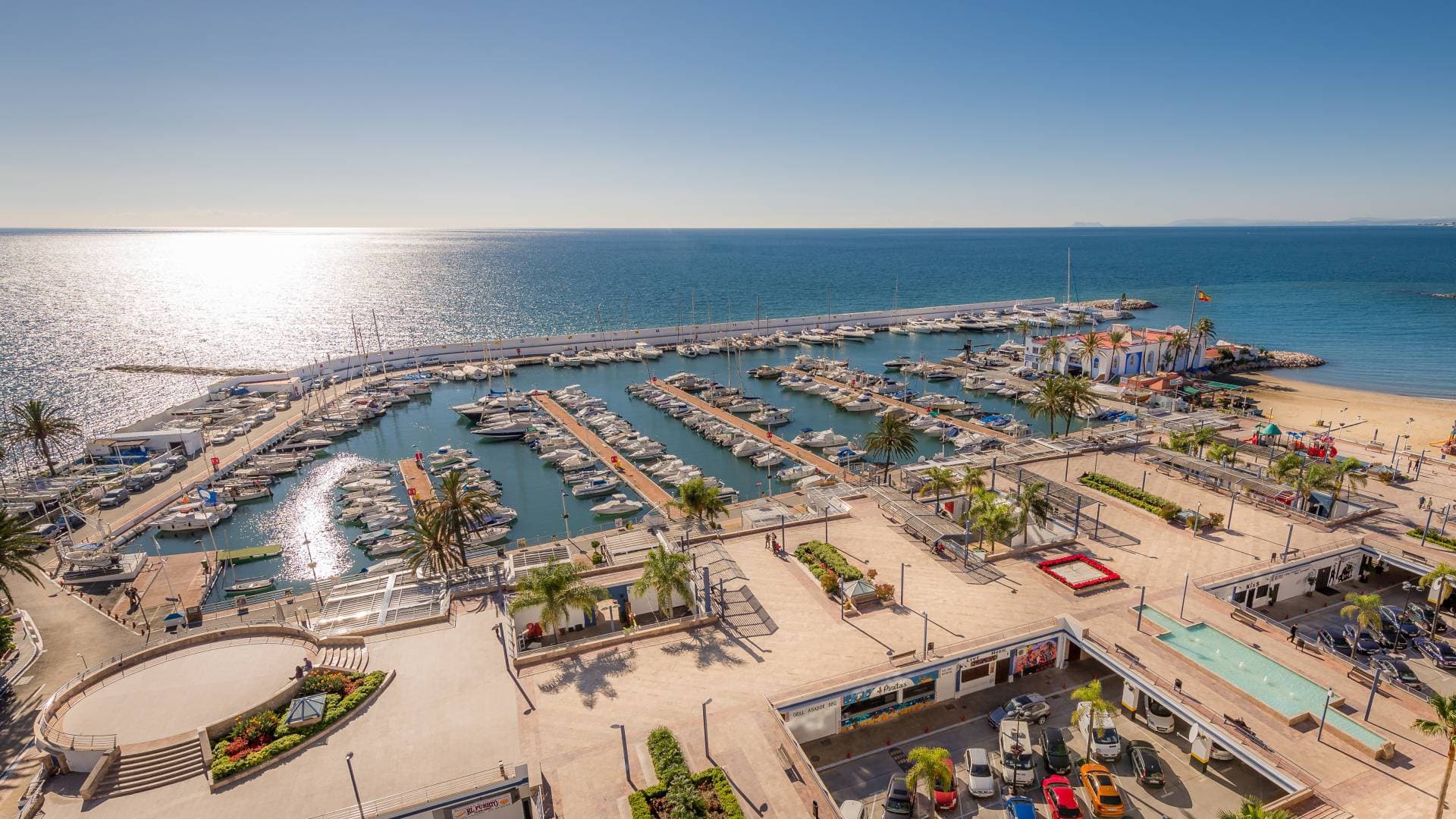
Marbella offers more than just sand, sun, and sea. Here are some ways to enjoy this setting year-round:
Hitting The Links. Marbella boasts the highest number of golf courses in Spain. Closest to the city are Río Real Golf Club, Marbella Golf & Country Club, Santa María Golf Club and Santa Clara Golf heading towards Málaga. Towards Estepona, there’s Aloha Golf Club, Real Club de Las Brisas, Magna Golf Marbella, and Los Naranjos. Each course offers golf schools for beginners and enthusiasts looking to perfect their swing. No need to bring personal gear—shops like Golf’us offer everything required, or equipment can be rented from places like Test and Rent.
Enjoying The Sea In Multiple Ways. Besides swimming in the Mediterranean, Marbella offers numerous ways to experience its azure waters. From renting jet skis and speedboats to taking SUP classes, practising wakeboarding at Cable Ski Marbella, sailing, seeing it from above in parasailing, and much more.
Hiking In The Mountains. The proximity to Sierra Blanca makes this activity a favourite, especially in autumn when the sun isn’t as intense. There is no need to venture far from the city to immerse in a trail. Close to Marbella are the Salvador Moreno and Marbella-Ojén routes.
Exploring The Underwater World. In Marbella’s marina, there are companies like COIS that organize diving excursions. One of the closest diving spots to explore is La Torre, which descends to a maximum depth of 12.5 meters. Additionally, a wreck lies on the site now and evolved a home to moray eels and congers.
Enjoying Cultural Life. From the annual Fair to processions and international concerts like Starlite, there’s always something happening. Strolling along Avenida del Mar feels like an open-air Salvador Dalí exhibition, showcasing his sculptures. Art enthusiasts can explore numerous galleries, while the Museum of Contemporary Spanish Engraving, housed in the historic 16th-century Hospital Bazán, features works by iconic artists such as Dalí, Miró, Picasso, and Tàpies amidst stunning Gothic, Mudéjar, and Renaissance architecture.
Practising Retail Therapy. Marbella, known for its sunny beaches and vibrant nightlife, also offers a shopping paradise. La Cañada shopping mall beckons with an irresistible array of designer brands, restaurants, and a haven for entertainment enthusiasts. From discovering the latest collections from world-renowned fashion houses to catching the latest blockbuster at the on-site cinema or expanding culinary horizons at the well-stocked supermarket – La Cañada offers something for everyone.
What are the most exclusive beach clubs near Marbella?
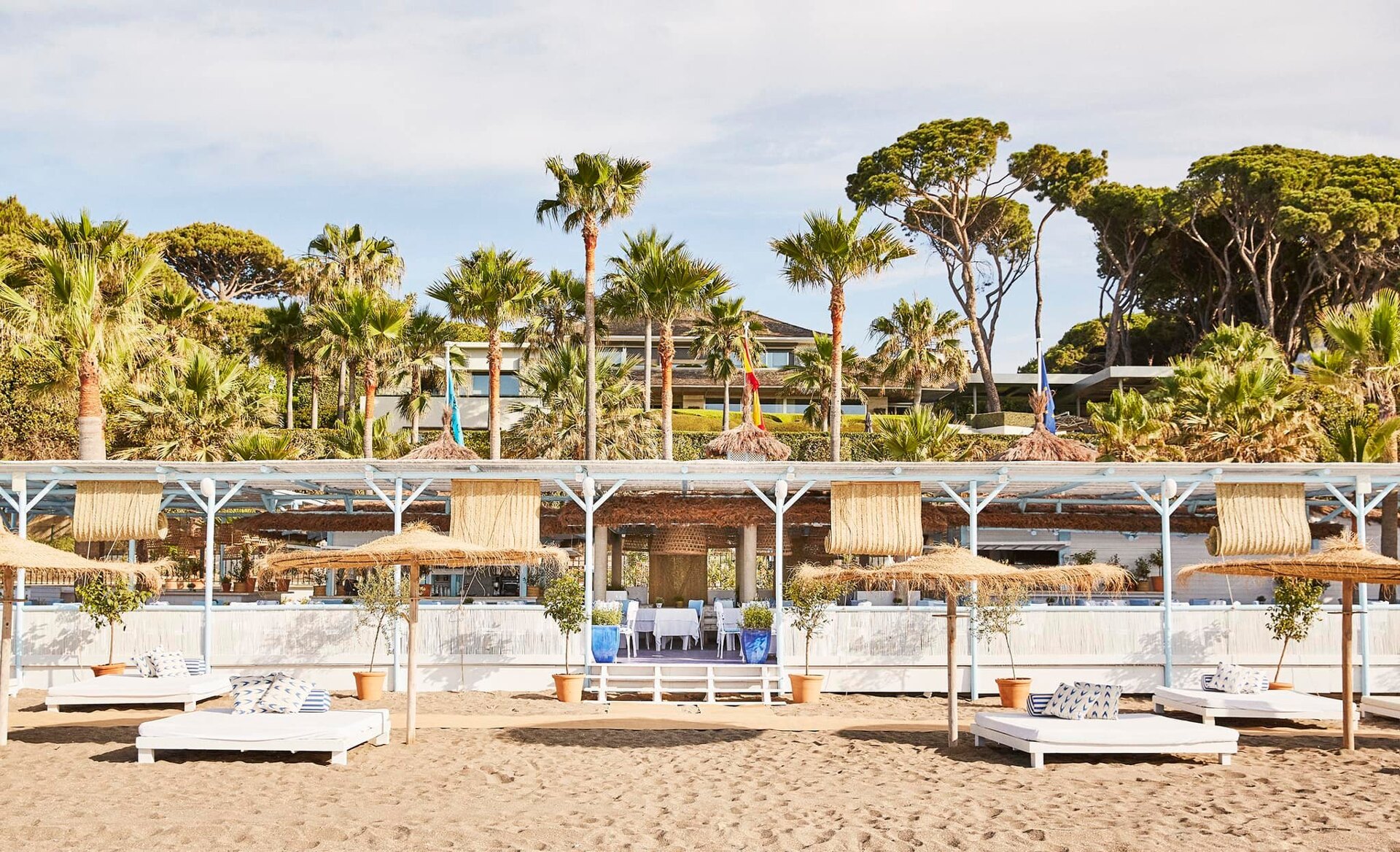
From tasty dishes to a laid-back atmosphere and sun loungers with ocean vistas, here are the top destinations along Marbella’s coastline not to be missed.
MC Beach. Nestled within the Marbella Club Hotel, this beach club draws inspiration from traditional Malaga chiringuitos. Perfect for savouring delicious seafood dishes with a touch of Mediterranean flair.
Beach Club. The chic beach club at Marbella Club Hotel embodies a retro Acapulco vibe, creating the perfect setting for enjoying Mexican cuisine or a refreshing piña colada. With its restaurant, bar, and pool, it’s the perfect destination for a day of beachside relaxation.
Chambao. Situated within the Puente Romano Beach Resort, Chambao is a boutique beach and pool club ideal for enjoying Andalusian flavours and Mediterranean vistas against the backdrop of stunning sunsets.
Coya Pool. It’s Puente Romano’s invitation to savour the flavours of Peru, surrounded by wild foliage and tribal beats, but at the feet of the Mediterranean and an elegant pool under Marbella’s sun.
Playa Padre. This beach club in Marbella is the ultimate haven for daytime relaxation, capturing the spirit of Mexico. As the sun sets, the ambiance shifts—vibrant beats from the DJ rise with the evening sky, creating an unforgettable party atmosphere. The legendary Boho Sunday parties are a highlight, making it the perfect spot to unwind and celebrate the good life.
Restaurants without a pool
Chiringuito Puente Romano. Offering a blend of relaxed amenities and fresh seafood delights, this beachside restaurant is a beloved spot for locals and visitors alike to unwind by the sea.
La Milla. With its sleek, contemporary design and expansive terraces, La Milla offers a range of culinary delights, from classic dishes to creative innovations like oysters with chamomile hollandaise.
Which are the high-end restaurants in and around Marbella?

The Golden Mile is packed with top-notch dining spots. The tough part? Deciding where to go. Here’s a must-try list you can’t miss.
Back *. David Olivas, born in Úbeda (Jaén), has developed his culinary career in Marbella. In November 2023, Back* received its first Michelin star. At Back, Olivas unleashes a contemporary vision of traditional Andalusian cuisine with signature dishes such as gum of foie mi cuit with marinated partridge and caramelized pistachio, and belly tuna brioche with black pepper.
Paladar Taberna. Located on the ground floor of the Lima Hotel, Paladar Taberna is known for its steak tartar on marrow and rice dishes “a la chapa”. This tavern brings David Iznaga and Victor Carracedo’s vision of the perfect hangout to life.
La Niña del Pisto. Authentic dishes and warm hospitality in a rustic setting with outdoor seating to enjoy the scenic views of narrow streets and white houses in the historic old town.
Taberna El Bordón. Regional products are transformed into fusion dishes such as candied artichoke flower with Iberian ham shavings or scrambled eggs with mushrooms and truffle, cooked at low temperature.
Taberna Casa Curro. In the heart of the historic centre, classic dishes are served on high tables made from barrels, standing or at the bar with tall chairs.
What healthcare services are available in Marbella and its vicinity?
Marbella’s prime location fosters exceptional access to healthcare. Residents enjoy the convenience of having a comprehensive range of medical facilities readily available, from state-of-the-art hospitals to specialized clinics. This ensures residents can receive prompt and effective medical care whenever needed.
Las Albarizas Health Center. This is a public health centre located in Marbella itself.
Costa del Sol Hospital. Serves as the primary public hospital in the vicinity, located approximately 9,7 km away (17 minutes via the A7. The travel time may vary depending on traffic conditions). Get directions.
Other private medical centres in nearby areas include Hospital Quirónsalud Marbella, Hospital Ochoa, Clínica Premium, Ceram Hospital, HC Marbella International Hospital*, and RS64 Clinic. Find more options here.
In addition, Helicópteros Sanitarios offers a 24-hour private home medical service. Get directions.
*HC Marbella Hospital Internacional has been recently awarded the Q distinction for Tourist Quality. The recognition of the hospital’s quality of care, granted by the Institute for Spanish Tourism Quality (ICTE), makes HC the first Andalusian hospital to obtain the Q mark and the third in Spain.
What schools and universities are close to Marbella?
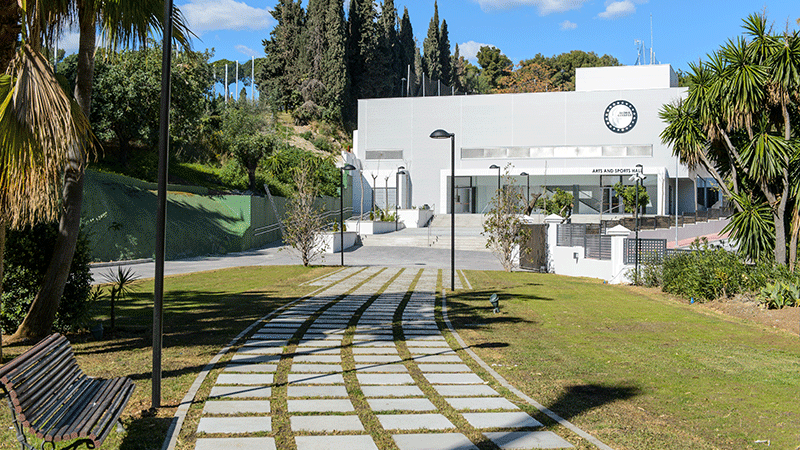
The Costa del Sol offers a wide range of educational options, with a strong and reputable system that includes some of the best private schools in Spain and internationally. Education in Spain is divided into three stages: early childhood (ages 3-6), primary (ages 6-12), and secondary (ages 12-16), with an optional final stage from 16-18 years. Primary and secondary education are mandatory.
Parents can choose from Spanish state schools, concertado schools (government-funded but privately managed), or international schools offering bilingual education with a strong emphasis on English. Many expats start with public schools and switch to private institutions for university preparation.
Private school fees range from €2,000 to over €10,000 annually, making them more affordable than in Northern Europe and North America, yet providing a high-quality, multicultural education.
Below is a list of highly recommended schools in the area and its surroundings.
Swans International School. With over 50 years of experience, follows the British curriculum, preparing students for GCSE or IGCSE exams in Years 10 and 11, and offers the International Baccalaureate Diploma Programme in Sixth Form. It stands out for its extensive sports program, including rugby, hockey, and swimming. Additionally, the school boasts modern facilities and a strong emphasis on performing arts, offering opportunities for students to develop their musical and dramatic talents.
British International School of Marbella. The British International School of Marbella offers a world-class British education for children aged 2-12. Its sustainable and modern campus features an indoor swimming pool, spacious sports facilities, and state-of-the-art classrooms, providing a unique and enriching learning environment. The curriculum, validated by the Spanish education system, seamlessly blends academic excellence with a deep respect for the environment.
Aloha College. Offers a world-class British education for students aged 3 to 18. The college’s commitment to sustainability is reflected in its Eco-School status and innovative curriculum. A diverse range of sports and extracurricular activities complements academic studies, fostering well-rounded individuals.
The American College in Spain. The first North American High School & University in Andalusia, offering the opportunity to start High School studies and continue the first 2 years of University in Marbella, with the option to transfer to the US or any other accredited American University worldwide.
Laude San Pedro International School. Boasts a diverse community of over 50 nationalities and fosters multilingualism and a growth mindset. Students follow the British National Curriculum from ages 3 to 18, with the option to transition to the Spanish system at 12. Recognized as one of Spain’s top 100 international schools, Laude offers a rigorous academic program, Cambridge English assessments, and a rich arts and technology curriculum.
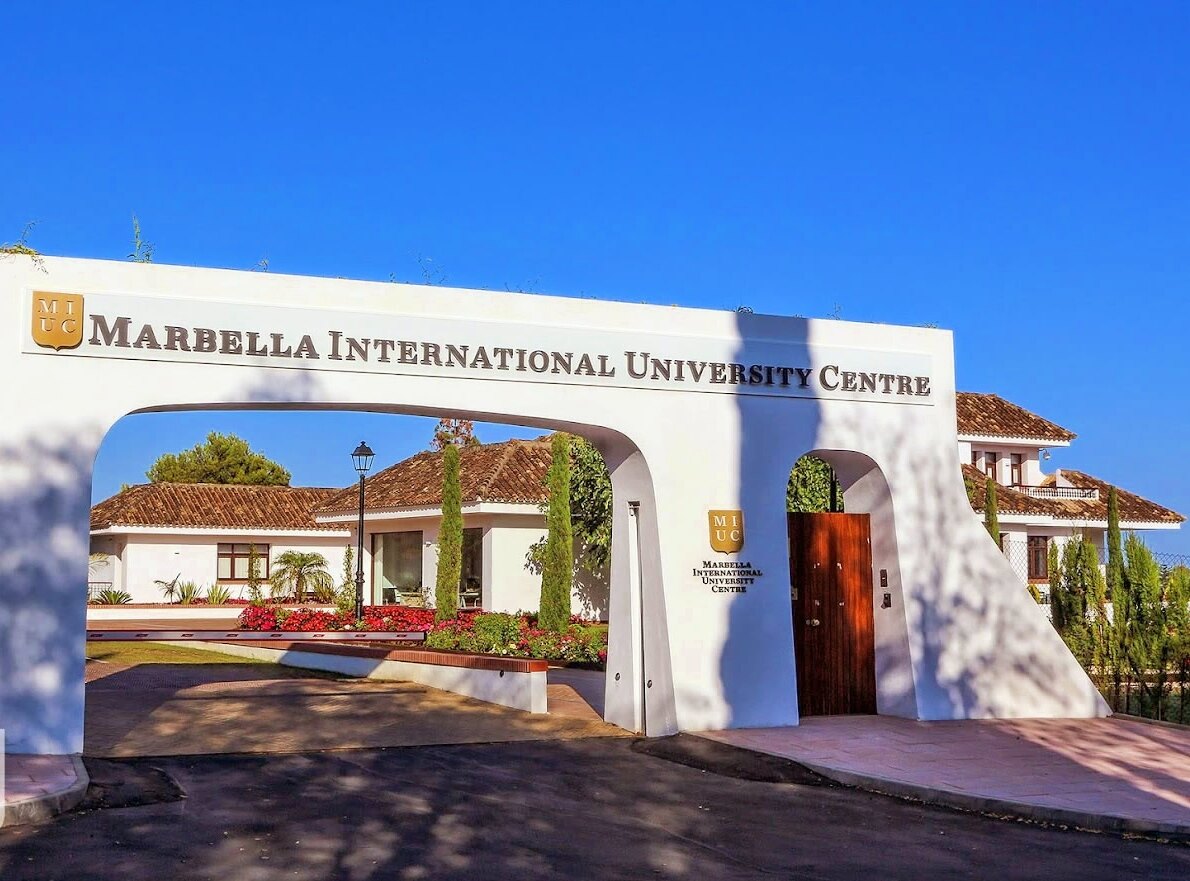
Saint George’s School. Private bilingual school following the British education system, combines a solid academic education with a focus on personal development. The school has a swimming pool, a vegetable garden, and ample green spaces, where students can enjoy outdoor activities and learn about nature.
Calpe School. A bilingual school following the British National Curriculum for children aged 2-11. In addition to its academic program, the school organizes various extracurricular activities, such as art, music, and sports workshops. The school is located in the centre of San Pedro Alcántara, making it easily accessible for students.
Casa del Mar International Montessori. In San Pedro Alcántara, this AMI-certified school offers a nurturing learning environment for children aged 15 months to 12 years. Its student-centered approach fosters self-directed learning, equipping children with the values, intellectual abilities, and innovation skills necessary for future success.
Efim. It is a French school that follows a hybrid pedagogical model adapted to the French National Education program, while also being trilingual in Spanish, English, and French.
Universities
Les Roches. Founded in 1954, Les Roches has emerged as a prestigious international school, shaping hospitality and tourism professionals through the renowned Swiss model of experiential learning.
Marbella International University Centre MIUC. This private institution delves into sought-after fields such as Business, Marketing, Politics, and MBA studies.
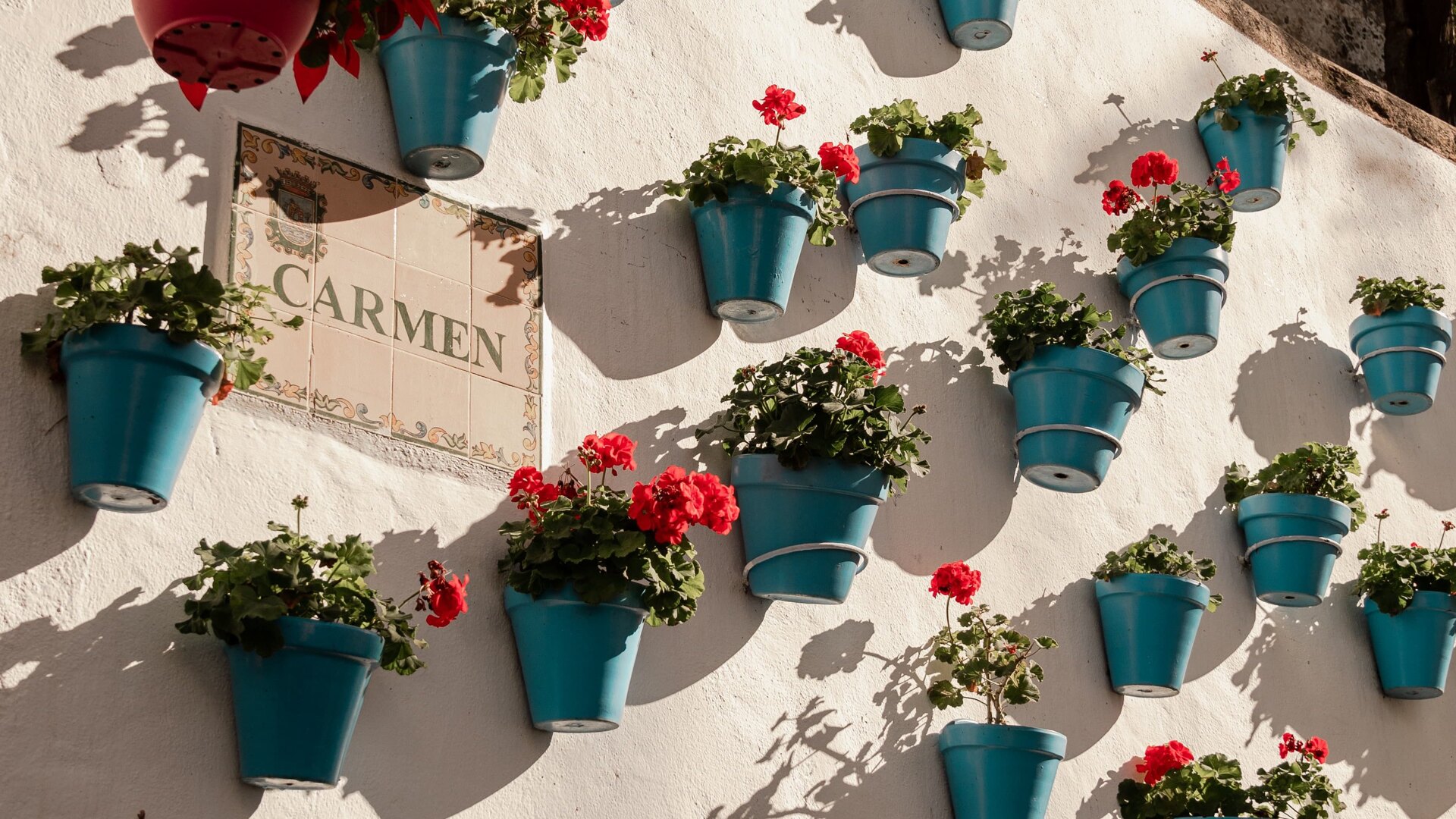
10 reasons to live in Marbella Centre
1. Marbella combines the best of both worlds: the convenience of having all services at hand with the charm of a village and the relaxed aura of seaside life.
2. It benefits from the exceptional climate of this Mediterranean spot, where winters are mild, and outdoor life can be enjoyed year-round, with the sun shining for 320 days.
3. It is the centre of all festivities and events, perfect for those who want an active social and cultural life without missing anything.
4. It’s impossible to get bored: it’s beachfront, has a historic centre, all kinds of shops, excellent restaurants to enjoy tapas and discover Andalusian tastes, and much more.
5. Showcases a mix of local and international residents, creating a cosmopolitan atmosphere that makes it easy to adapt.
6. The city pulses with cultural vibrancy, from its historic centre and the Alcazaba to the charming Andalusian houses. Among its highlights is the Museum of Contemporary Spanish Engravings, a key destination for modern and contemporary art.
7. It’s just a short drive from some of the most breathtaking beaches in Spain.
8. It offers a variety of properties that adapt to different lifestyles in a privileged setting.
9. It’s close to excellent healthcare services and schools, offering peace of mind due to their quality and proximity.
10. It’s surrounded by scenic spots to experience nature without travelling far, from strolling through the tree-lined Parque de la Alameda to organizing a hike to La Concha.
About the Author
Originally from Argentina, Constanza holds Italian nationality and is fluent in Spanish and English. She studied Social Communication at Universidad Austral and earned diplomas in Digital Marketing, Sustainable Business (Cambridge), Neuro-Linguistic Programming, and Graphology.

